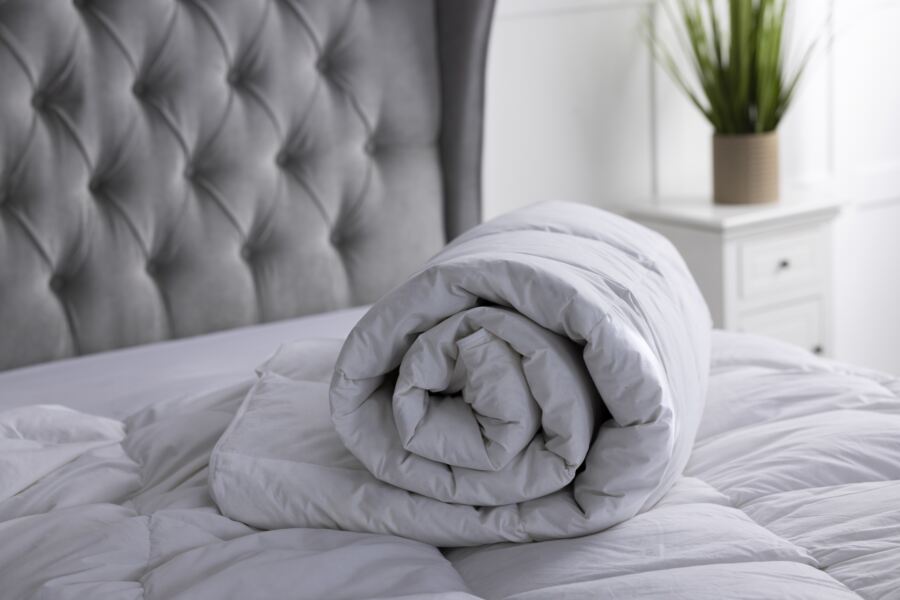Take on the task of brightening up your bedding with our easy to follow tips.
You’ve checked the label and got the green light to deep clean your duvet, so what next? Read on for five tips to make cleaning your bedding a breeze.

1. Check your drum size
A 7kg drum should take up to a king size duvet, just remember it’ll need space to move around the drum. A higher tog or thicker duvet may squeeze into your machine, but if space is too tight it won’t wash properly. For best results, fold your duvet in half and spread out the weight as you feed it in.
2. Use non-bio detergent at the right temperature
With your duvet neatly in the drum, you’ll need to ensure the filling doesn’t clump together during the wash; dryer or tennis balls are a great solution. If your feather or feather and down duvet is suitable for a machine wash, make sure you use non-biological detergent. Don’t be afraid to use one with a built-in stain remover, if needed. Wash at around 30°C on a gentle cycle and run two rinse cycles to remove all soapy water.
3. Jump in a bath tub
If your drum isn’t up to the task, you could always try a hand wash in a bath tub. Use tepid water and non-biological detergent before fully submerging your duvet. You can choose to scrub, or go into grape-pressing mode – stand in the bath and walk up and down the duvet. Drain the water by leaving the duvet in the bath and repeatedly rinsing with fresh water. Finally, roll the duvet as tightly as possible without wringing to squeeze out excess water. Remember to unroll fast to avoid wrinkling the fabric.
4. Pick the perfect drying day
A damp feather-filled duvet will appear darker after a wash, so don’t be alarmed. If you own a dryer with a large drum it’s perfectly fine to use it for your duvet. Again, dryer balls or tennis balls will ensure the filling remains evenly spread. Dry on a low heat and shake out occasionally during the cycle. If you don’t have a tumble dryer, you can use a washing line. It’s best to air-dry in warm and windy conditions, as duvets are prone to growing mould when left to dry for too long.
5. Don’t forget your pillows

A clean duvet deserves clean pillows to match. Persil recommend washing your pillows twice a year because of their high exposure to germs. All foam pillows should be washed at a dry cleaner, but it’s worth checking the label on other types of pillow to see if they can be washed at home. Make sure there are no holes and place pillows in a case to ensure the filling doesn’t spill out. Set the temperature to 60°C to kill bacteria and dry in a tumble dryer on a low heat – remember to use dryer or tennis balls on both occasions to stop the filling from clumping.














